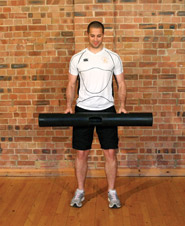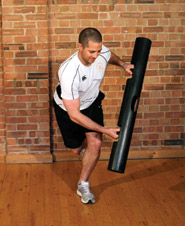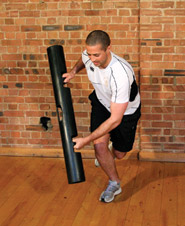Sports circuit with ViPR
Group training for sports teams can be effective and inventive and, with the right choice of equipment, just as feasible in the studio as on the field.
To help you on your way, here's an example circuit that can help condition athletes.
1. Squat with lateral low to high pattern
- Begin with ViPR at an angle
- Maintain a tall spine and a broad base of support throughout
- Descend into a squat while reaching ViPR low and laterally
- In a well-timed manner, squat up and reach high and laterally to the opposite side
- Return to the start position and repeat for the desired number of reps/time
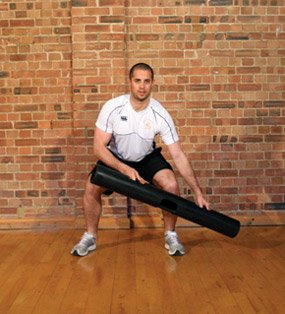
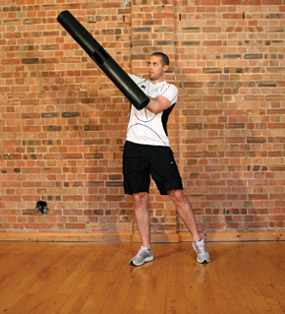
2. ViPR transverse plane jumping jack
- Use a two-handed neutral hold
- Maintain an athletic stance and active feet/hands
- Begin with the feet parallel, pointing in one direction
- Turn the hands (relative to the feet) and point them in the opposite direction
- Perform a rhythmical twisting pattern with the hands moving in the opposite direction to the feet
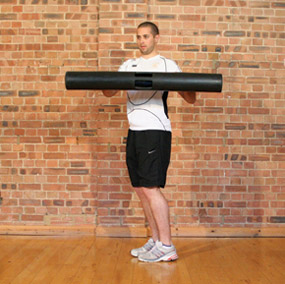
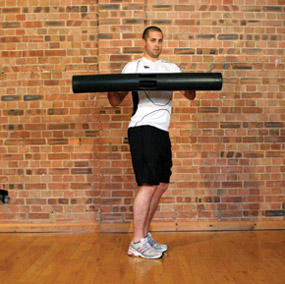
3. Front carry hip sways
- Use the hold shown
- Take a very broad stance (in frontal plane)
- Ensure to move from the hips, thereby taking pressure off the lower back and knees
- With the feet in a slight out-turn and the back tall, begin to shift the weight to one foot (by moving the hips to one side of the body)
- Load the hips comfortably and transition to the opposite side
- Maintain a tall spine
- Repeat for the desired number of reps/time
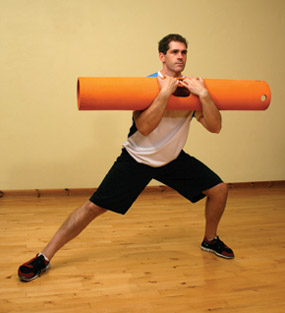
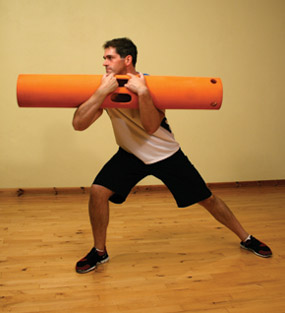
4. Transverse plane thread the needle
- Perform the exercise rhythmically and maintain an athletic stance
- Make sure that the individual is comfortable with a transverse plane lunge (as shown)
- Perform an out-turn lunge (transverse plane) and plant firmly on the lunging foot and leg (through the big and little toe, and the heel)
- In a rhythmical action, drive ViPR down and through legs (as shown)
- Be aware of the range of motion; it should reflect/be modified for the client’s ability
- Lift ViPR back up, step back to start position and repeat to the opposite side
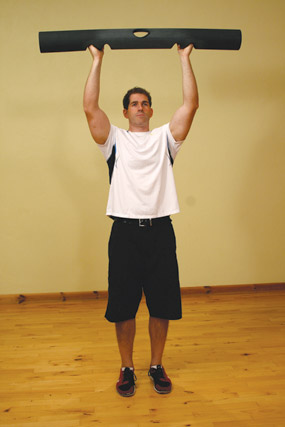
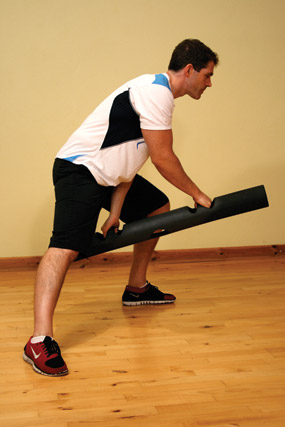
5. ViPR foot taps (frontal plane)
- Ensure that you are on a level, flat surface
- Maintain an athletic stance and active footwork/armwork throughout
- Begin at one end of ViPR, with one foot touching the top of the ViPR. The opposite arm is also forward
- Rhythmically switch feet and arms so the opposite sides are now forward
- Alternate back and forth as shown while moving from side to side of ViPR
- Maintain rhythmical action
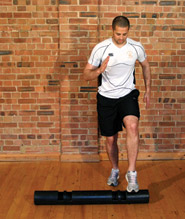
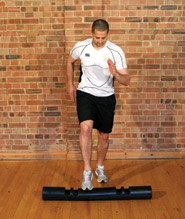
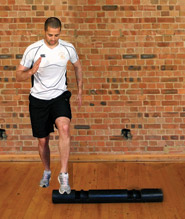
6. Ice skaters
- Begin with ViPR in front of the hips
- Maintain a flat back throughout to ensure the hips are properly loaded
- Maintain an athletic stance throughout
- Step laterally and plant the foot firmly on the ground with three points of contact (big and little toe, plus heel)
- With the opposite hand, reach across the body at knee height
- Decelerate through the hips and push off to start position
- Transition to the other side by stepping with the opposite foot laterally and repeating step above
